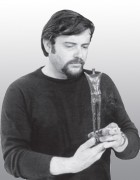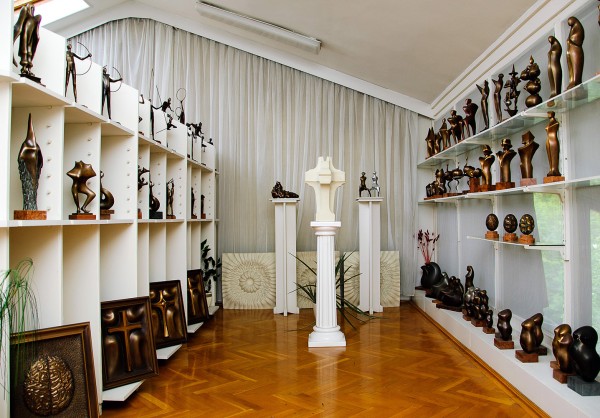Quotes from critics

“...It was very clear already at the beginning of his career that he takes his profession seriously, he is most devoted to it. He is a perfectionist who uses only quality material. Although he is very keen on processing his works for months or even years, his works do not become l'art pour l'art but ever more human. He has been trying to express his message in a more and more simple and concise way so that it becomes easy to understand. First he thinks, and it's only then that he expresses his thoughts without making his sculptures speculative. His sculptures make you think and feel...”
by Endréné Ury, PhD
“...His statuettes are the proof for monumentality not being a question of size but that of design, artistic understanding and tone. If I saw some of them in photos, I'd think they are sizeable. If you watch his bronze statuettes closely, you can see how delicately modelled they are...”
by Tivadar Artner
“...He moulds in a sensitive, expressive way to make his works exciting and tense. His figures are enclosed by witty contours that are still not so clear-cut. Gusztáv Pálfy puts much energy into creating a smart surface for his sculptures – he doesn't render details unimportant just for the sake of the overall effect...”
by Gábor Pogány Ö.
“...His virtue lies in the richness of his ideas. He flings both his doubts and his ecstasy into sculptures. He remarks on the beauty of a woman's body with honest admiration and his round shapes also express fertility, abundance and the strength of man and earth...”
by Mikós Losonci (Pesti Hírlap)
“...In his symbolic representation he focuses on the effect made by the positive, convex and the negative, concave forms, which used together trigger contradictory feelings. His attitude ranging from light irony to sarcasm is also quite characteristic of Pálfy's art...”
by Béla Újváry
“...Pálfy's sculptures are characterized by deep humanity. He cares for humankind but at the same time he observes our petty vanity, our struggle for position and other such unworthy forms of attitude with certain sarcasm. Through his grotesque works he presents us with a mirror in which we can recognize our ordinary selves.”
by Mária Egri, PhD

“...Gusztáv Pálfy is a thinker, a responsible man truly worried about the fate of humankind. He represents man struggling with nature, time and just as much himself in his sculptures...”
by Anna Oelmacher
“...The meaning of his statuettes was not influenced by fashion. For example, his works expressing his anxiety over our environment were already present when only few were discussing the dangers of destroying nature.”
by Ferenc Buda
“...The secret of Gusztáv Pálfy's statuettes is that life, fertility, the wonder and power of nature are simply radiating from them. I strongly believe that his works will win over time and will always feel contemporary.”
by Attila Komáromi
“...Associations burst out of his meditations and discoveries. His works are representations of his love of the world, sensitivity and compassion. The individual way in which he expresses these things makes his works unique. Artists like Gusztáv Pálfy believe in the fact that man will always be humane and invincible.”
by Christoph Kramer
“...It's only a deeply humanist person who can create works that mirror our reality and fallibility from an unusual perspective. Such works make us look into ourselves, not just look at ourselves.”
by Stephen Furtounov
“...For him the sublime and the terrible are both evident, not to speak of the ironic or parabolic perspectives. This artist of classic upbringing has been observing the Homo sapiens more and more sceptically and ironically. Besides this, he is a sculptor of the tragic, too, who is deeply worried about the pollution and destruction going on in our environment right now.”
by Pál Szuromi
“...This creator of statuettes and sculpture compositions is as worried about the state of and the future for our worldly life as myself. Still, he doesn't want to show the on and off rule of chaos and the fear of the mind through panic and threatening shapes. He tries to represent these topics through order and the distinct language of art thus controlling them somewhat. “
by Ferenc Buda